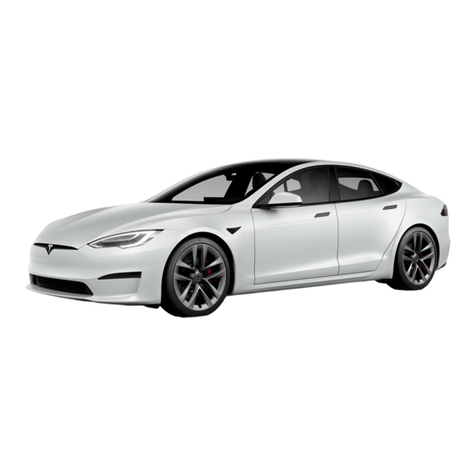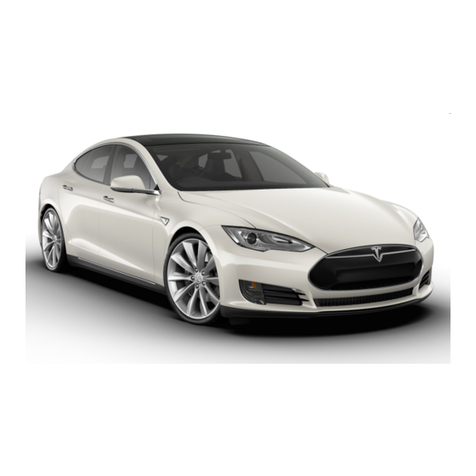
P/N: 1028871-07-A REV: 1 i
TABLE OF CONTENTS
OVERVIEW
Interior Overview............................................... 1.2
Exterior Overview ............................................. 1.3
OPENING AND CLOSING
Doors..................................................................... 2.2
Windows.............................................................. 2.7
Rear Trunk........................................................... 2.8
Front Trunk....................................................... 2.10
Sunroof............................................................... 2.12
Glove Box .......................................................... 2.13
Cup Holders...................................................... 2.14
SEATING AND SAFETY
RESTRAINTS
Front and Rear Seats ...................................... 3.2
Seat Belts............................................................ 3.4
Child Safety Seats ............................................ 3.7
Tesla Built In Rear Facing Child Seats..... 3.11
Airbags ............................................................... 3.15
DRIVING
Driver Profiles ................................................... 4.2
Steering Wheel................................................. 4.3
Mirrors.................................................................. 4.5
Starting and Powering Off........................... 4.6
Gears .................................................................... 4.7
Instrument Panel.............................................. 4.8
Lights ................................................................... 4.11
Wipers and Washers..................................... 4.15
Park Assist......................................................... 4.16
Trip Information .............................................. 4.18
Energy Usage................................................... 4.19
Brakes ................................................................ 4.20
Traction Control............................................. 4.22
Cruise Control................................................. 4.23
Rear View Camera ........................................ 4.24
USING THE TOUCHSCREEN
Touchscreen Overview .................................. 5.2
Touchscreen - Controls................................. 5.4
Touchscreen - Settings ................................. 5.6
Climate Controls ............................................... 5.8
Active Air Suspension ................................... 5.11
Media and Audio............................................. 5.12
Phone .................................................................. 5.17
Maps..................................................................... 5.19
Navigation ....................................................... 5.20
Security Settings............................................ 5.22
HomeLink® Universal Transceiver............ 5.23
Software Updates.......................................... 5.24
Mobile App ....................................................... 5.25
CHARGING
Electric Vehicle Components...................... 6.2
Battery Information ........................................ 6.4
Charging Model S ............................................ 6.5
MAINTENANCE
Maintenance Schedule................................... 7.2
Tire Care and Maintenance .......................... 7.3
Temporary Tire Repair................................... 7.8
Cleaning.............................................................. 7.12
Wiper Blades and Washer Jets................. 7.15
Fluid Reservoirs............................................... 7.16
Fuses.................................................................... 7.19
Jacking and Lifting........................................ 7.23
Parts and Accessories.................................. 7.24
SPECIFICATIONS
Identification Labels ....................................... 8.2
Vehicle Loading................................................ 8.3
Dimensions and Weights .............................. 8.5
Subsystems ........................................................ 8.6
Wheels and Tires.............................................. 8.8
ROADSIDE ASSISTANCE
About Roadside Assistance......................... 9.2
Instructions for Transporters ...................... 9.3
CONSUMER INFORMATION
Disclaimers ....................................................... 10.2
Reporting Concerns...................................... 10.3
book.book Page i Tuesday, September 17, 2013 12:33 PM



















































